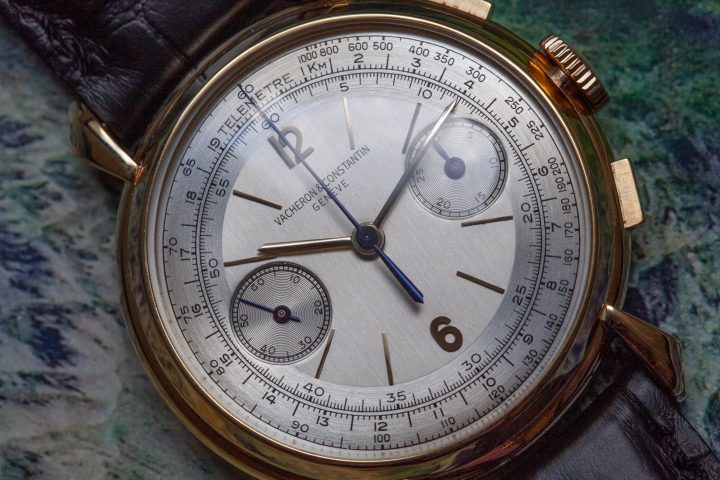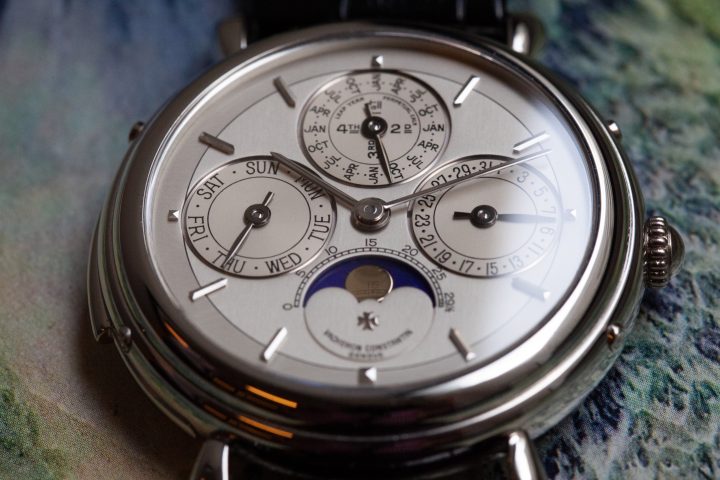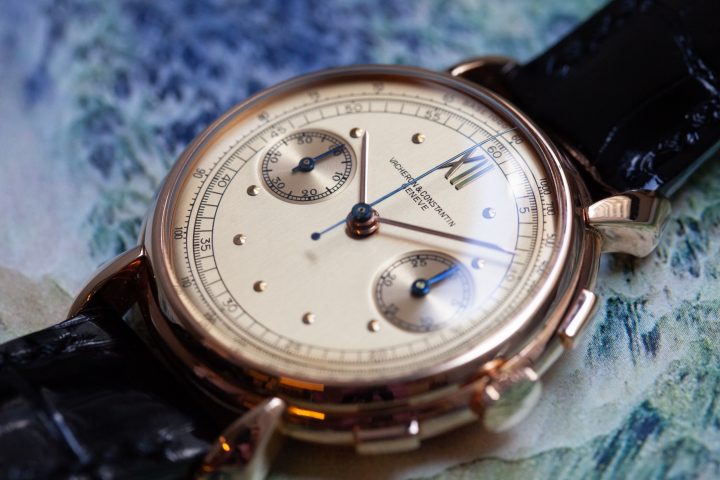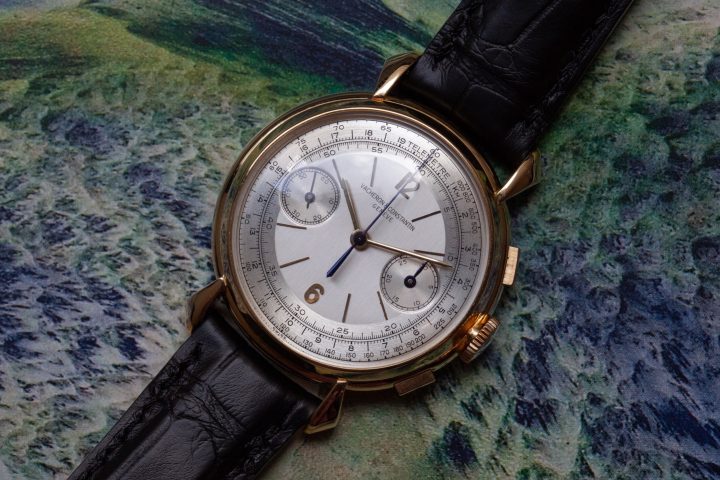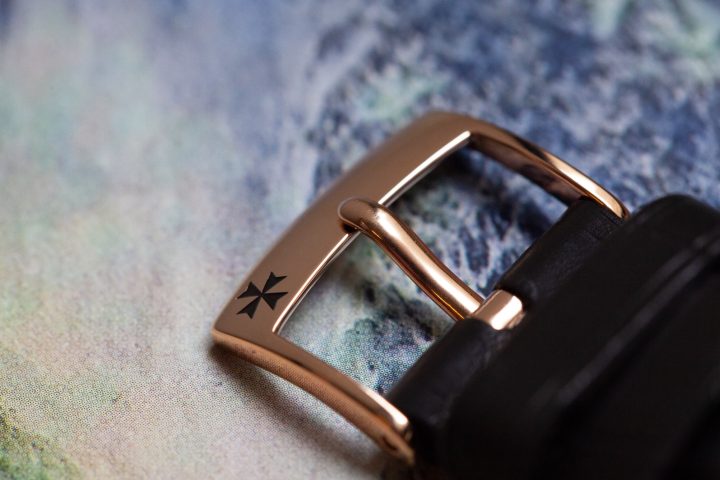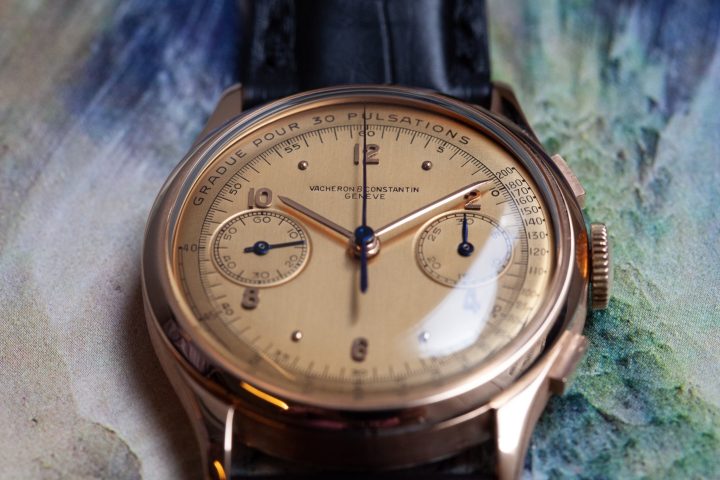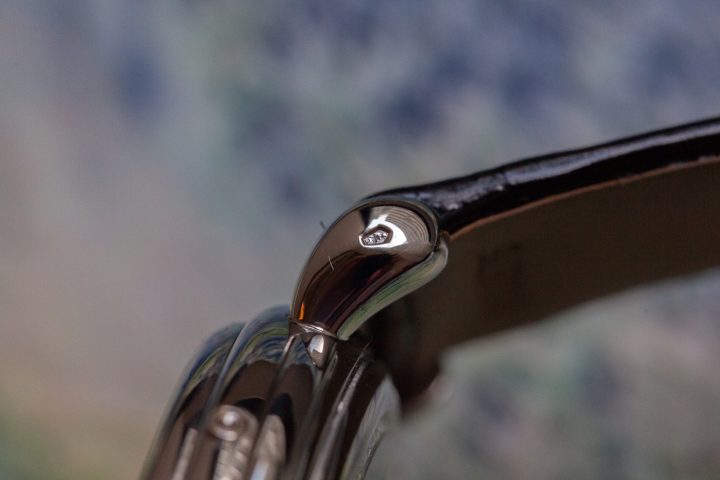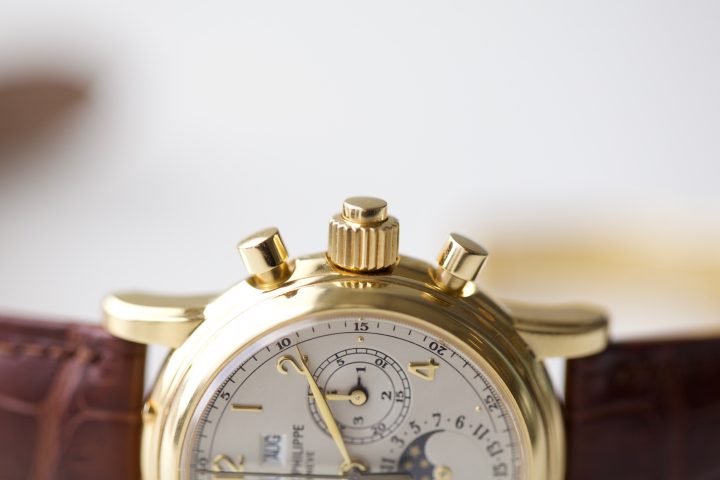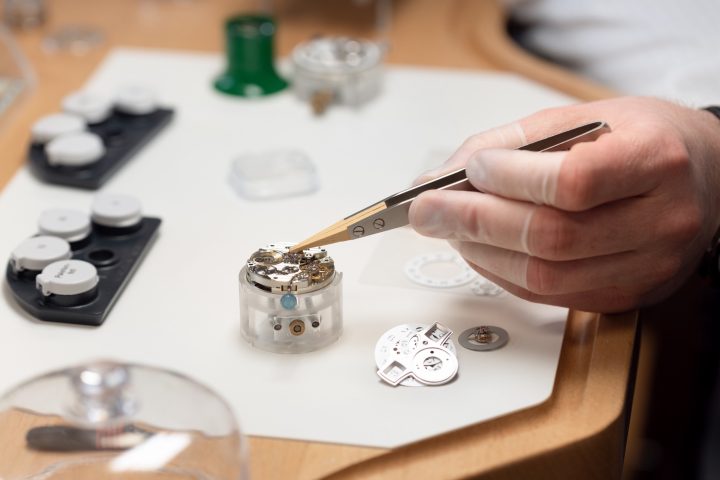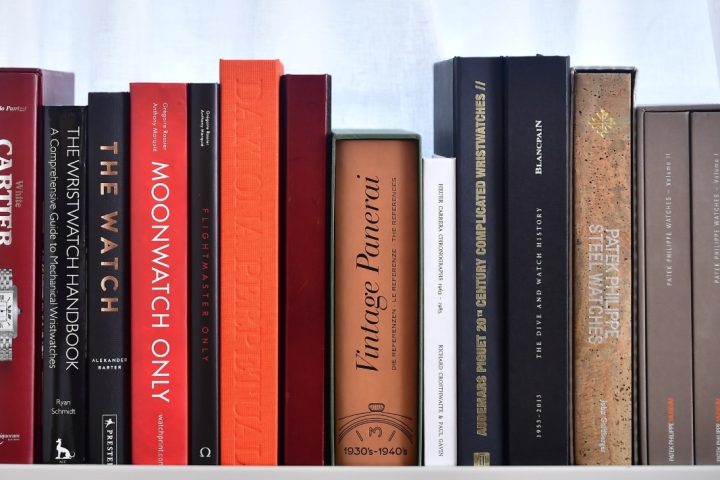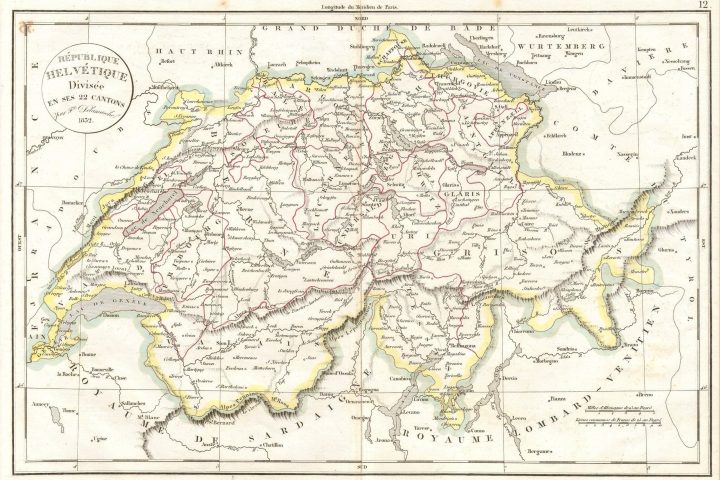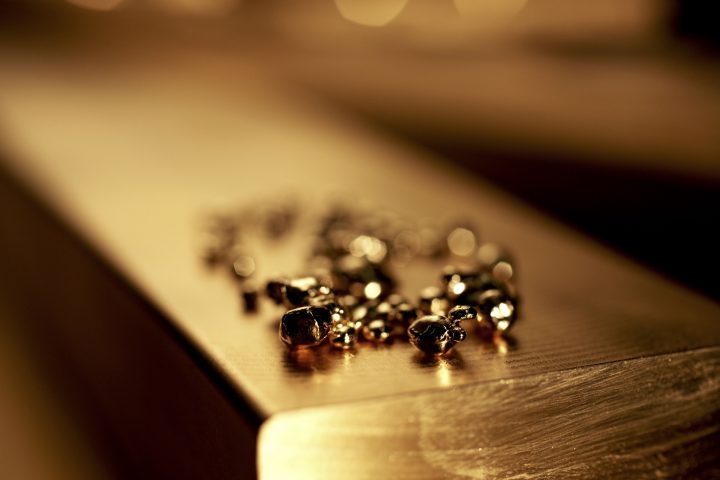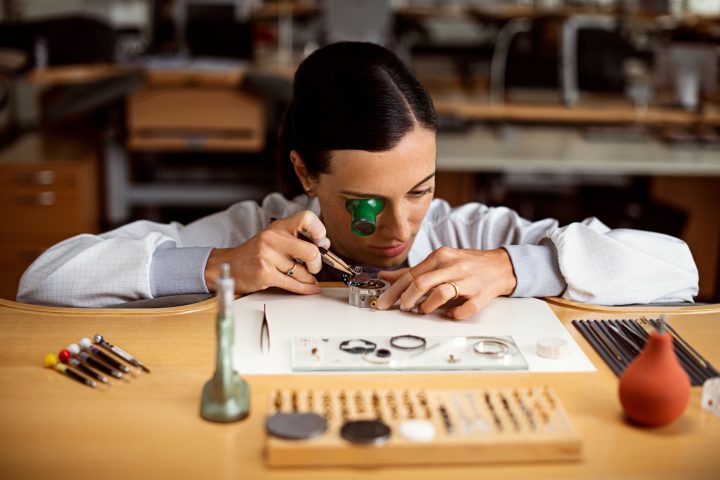In the car world, we have no shortage of manufacturers taking on the responsibility of fully supporting their vintage models. In Italy there is the Classiche Department at Ferrari, and Lamborghini’s Polo Storico. In Germany there is BMW Group Classic, and Porsche Classic. For the UK, Jaguar Land Rover Classic Works, and Aston Martin Works support the vehicles from their respective marques. Services offered range from checking a chassis and engine number against the factory records to confirm they were born together, which can result in a document like Ferrari’s Red Book that effectively authenticates every component on the car is in the configuration it was born in, and is extremely desirable when it comes time to find a buyer. At the other end of the spectrum, there are complete nut and bolt, bare-metal restorations, as well as upgrades to modern conveniences, such as air conditioning and power steering, for those owners that want a daily driver. These facilities are effectively companies in their own right that can be hugely profitable for a brand, not just from a dollar value perspective, but for public relations and marketing purposes as well.

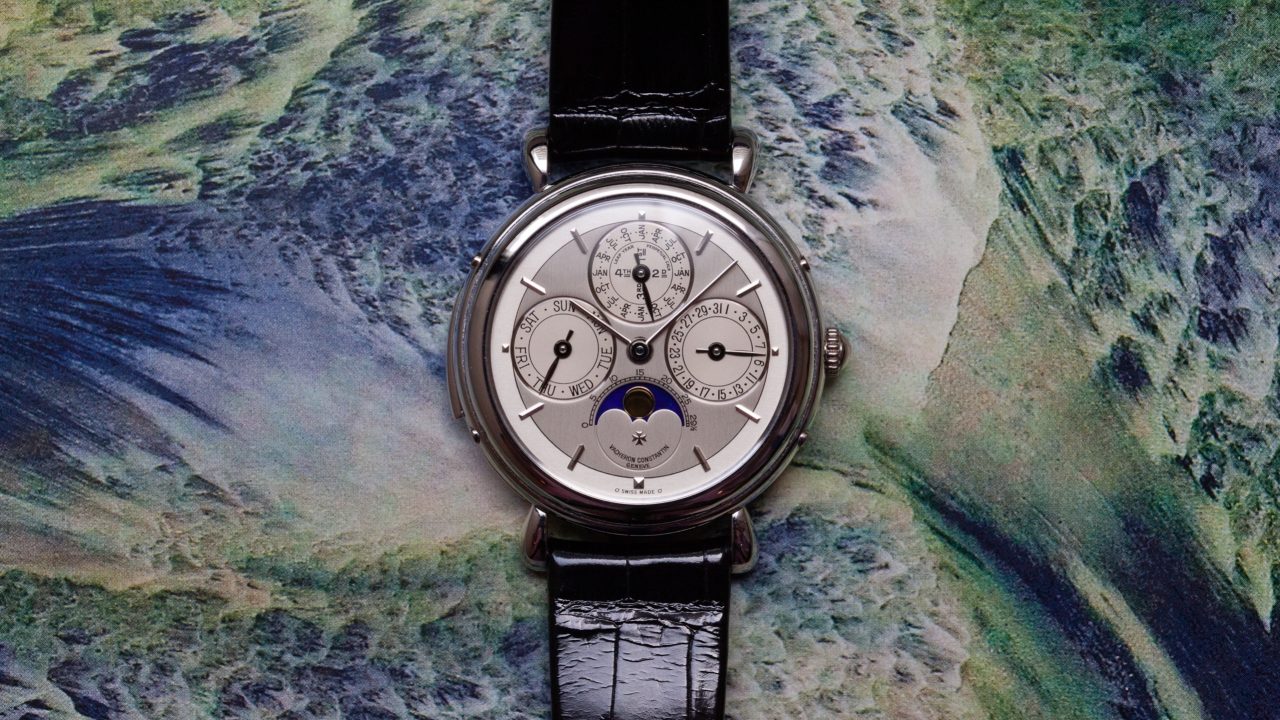
A relatively modern watch dating from 1993, the reference 30020 still embodies many of the attributes of the very best vintage pieces from Vacheron Constantin.
It is not so surprising that we haven’t seen similar all encompassing initiatives from watch brands, due to the consternation from collectors around the servicing of older watches at the manufacture, and what restoration should consist of; historically, many parts were replaced with newer pieces that did not reflect the character of the watch, with the focus being on returning something that looked shiny and new, rather than preserving the history of the piece. While extracts from archives and similar services have been available for a while now, in recent years the restoration element has evolved with a number of manufacturers investing in their heritage departments; employing dedicated watch markers where components often have to be made from scratch, cataloguing their older parts so they have an overview of what is available, and employing full time historians or engaging academics on a consultancy basis, to do forensic analysis on their expanding museum collections, as they purchase more important vintage pieces at auction or privately, for their own archives.
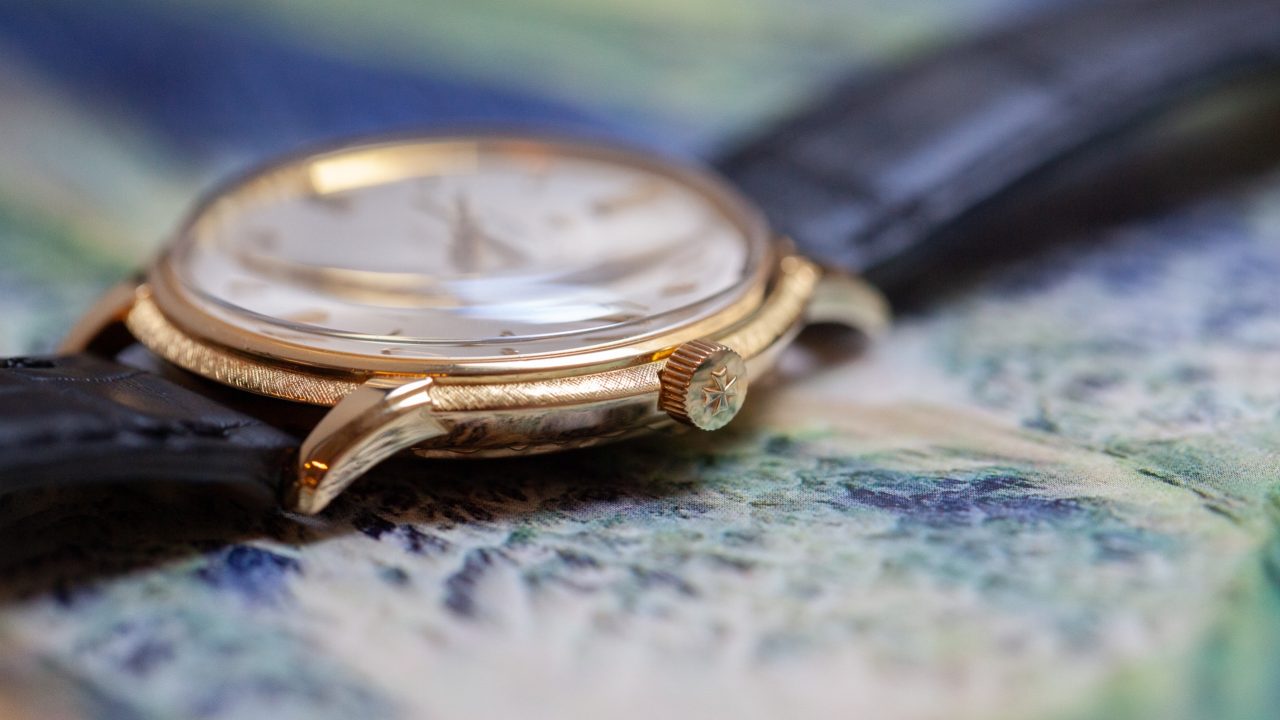
Perhaps textured cases are ready for a revival? The technique certainly adds flair to a time-only dress watch.
A lot of this work has been taking place behind closed doors, but some are becoming more vocal about their work as they realise it is an opportunity to have a dialogue with their most loyal fans while educating new buyers on the history of the company. Vacheron Constantin has what many consider to be the most integrated of all of these services, with a team of employees to check the archives regarding a specific watch, offer a restoration service, and even retail a small number of vintage watches through their boutiques, which have been acquired from the market, totally overhauled, and come complete with a warranty. We were fortunate enough to spend some time with a selection of pieces from the Les Collectionneurs range that were being offered, and it was an ideal opportunity to not only compare the manufacturing techniques used in vintage watches versus their modern counterparts, but to also understand what restoration looks like today.
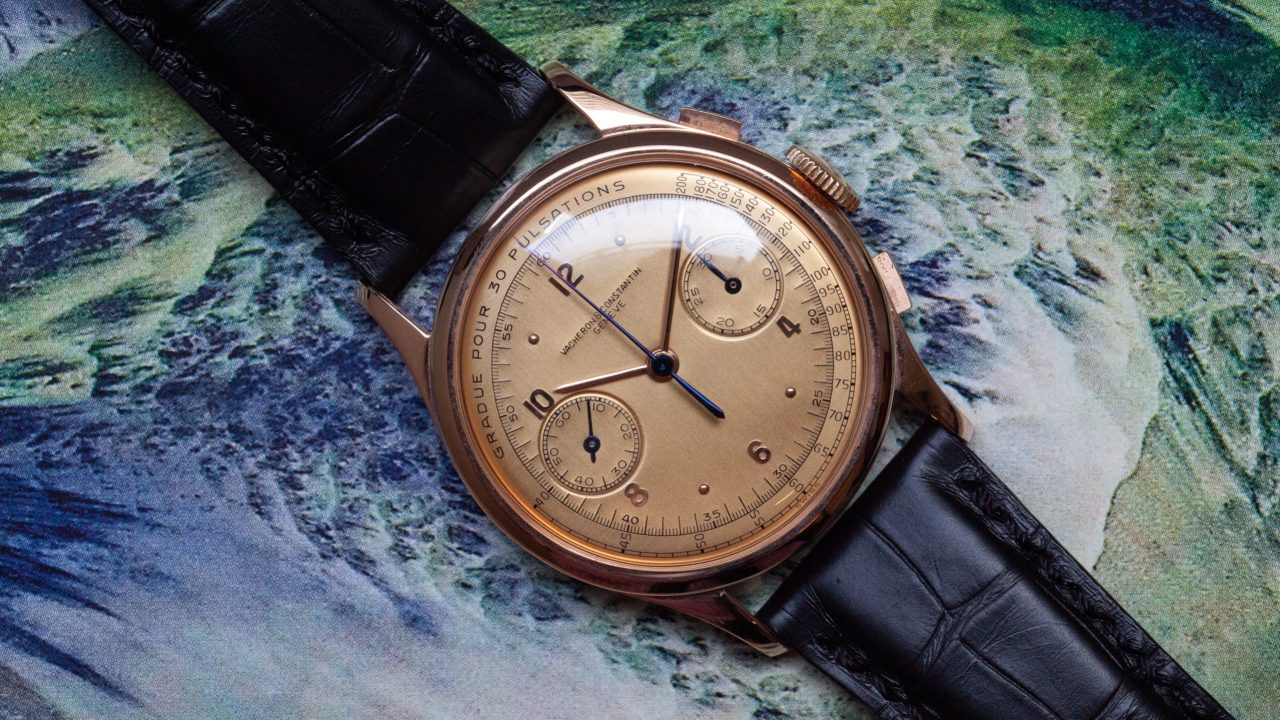
Details such as the two-tone dial, hard enamel signature and scales, together with the individually applied hour markers shine though on vintage watches such as this reference 4072 from 1948.
The Watches Up Close
The breadth of the pieces offered by Vacheron Constantin really shines through when one starts to dig into their archives. While signature models such as the Overseas, developed from the historic 222 model designed by Jorg Hysek, are well known to collectors today, like other top tier brands the product line-up wasn’t always made up of catchy names, and watches were simply referred to by reference number or complication. So in addition to an interesting time-only reference 6394 from 1961 with textured case housing the well-regarded calibre 1071, and a platinum tour-de-force perpetual calendar minute-repeating reference 30020, we also got to see a trio of chronographs, two reference 4178 and a reference 4072.
Perhaps the thing that impresses the most, when inspecting all of these watches under a loupe, is the sheer quality of the pieces on offer. It’s easy to feel slightly jaded by the relatively mass produced pieces that make up the majority of the watch industry today, so to handle something that was truly handmade is worth taking some time to absorb. Such details as two-tone dials, hard enamel signatures and scales, individually finished and applied hour markers, a variety of complicated lug profiles, and involved finishing to cases all feel fresh and exciting, further enhanced by the small variances that are clearly the product of a human hand.
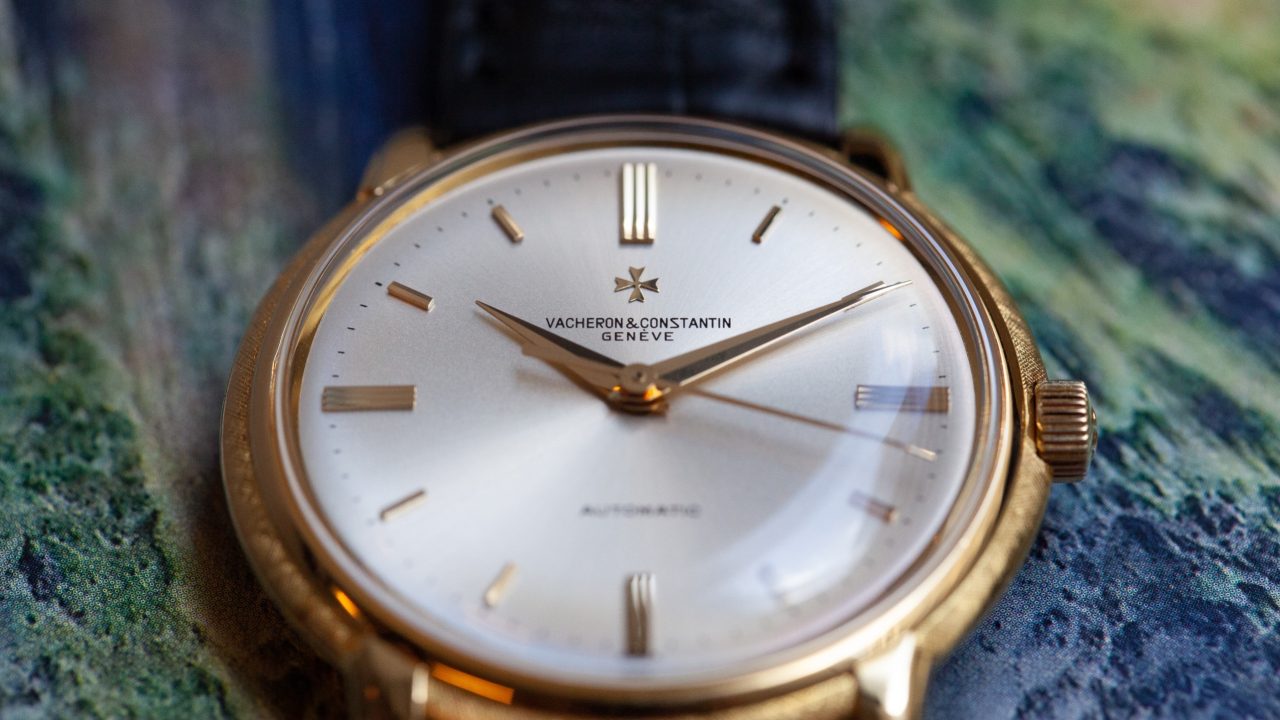
The applied logos and triple faceted quarters markers on the bright soleil finished dial of the reference 6394 from 1961 share the level of detail that even a simple time only watch can embody.
It should be remember that up until fairly recently (and continuing today in a few circumstances), even the most prestigious manufacturers would share component suppliers. Whether it was dials from Singer and Stern, cases from Dubois, Classicor and Antoine Gerlach, or movements from Valjoux, what distinguished a manufacturer was its aesthetic style and design philosophies, quality of finishing to the raw ébauche inside together with the cases housing them, and how well it could regulate and adjust a calibre to provide accuracy and reliable. The design philosophies also extended to the price points and positioning of the brand, meaning that a prestigious manufacturer such as Vacheron Constantin could specify complex dial details that added to the cost, as well as to the beauty of one of the defining features of a watch.
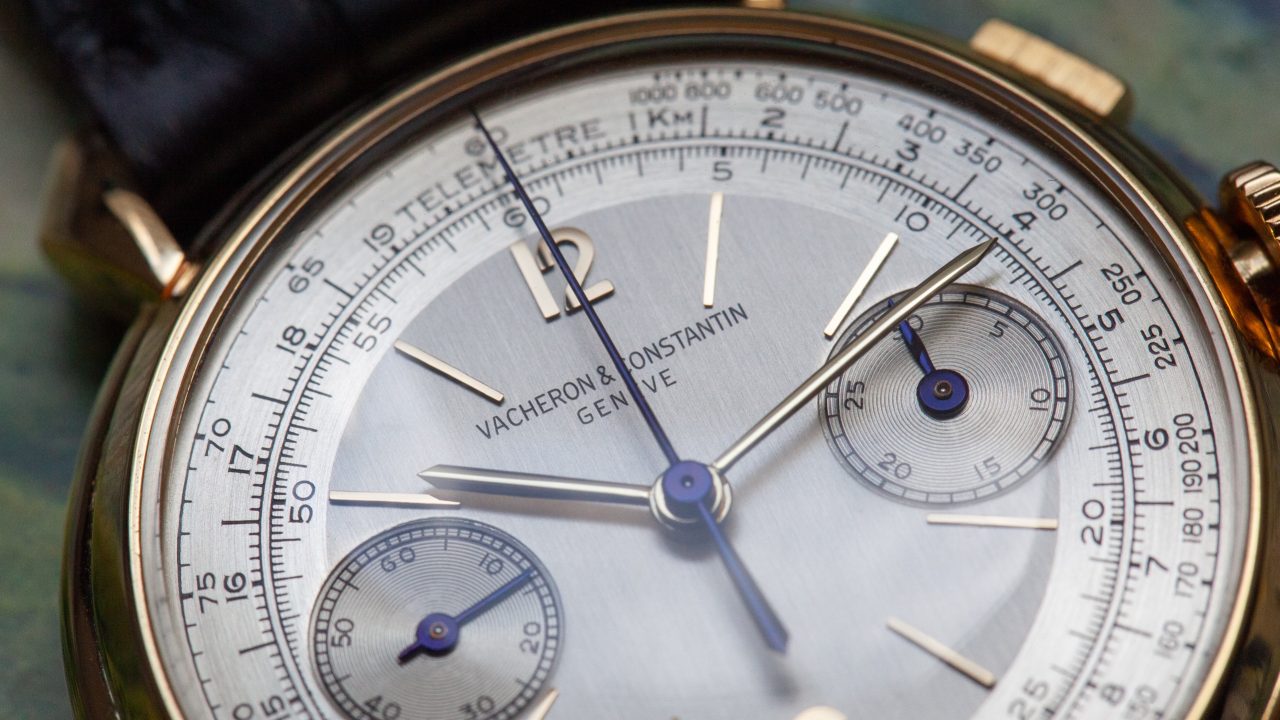
Stong two-tone dials have already seen something of a revival in recent years and work extremely well on chronographs such as this reference 4178 from 1945.
What this also means is that one can more easily benchmark a particular top tier brand to another when quite a few of the foundations are shared, and this shines a bright light on is how reasonably priced vintage watches from Vacheron Constantin are when compared to its competitors in period. It is truly astounding to think that two gold chronographs from the 1940s, that were both manufactured in Geneva with a calibre from Valjoux, and a multi-tone dial featuring hard-enamel signature and scales, can be separated by such a considerable sum of money, showing how much of a hidden gem these watches from Vacheron Constantin are.
While the prices vary within Les Collectionneurs, they are very comparable to the results achieved for the same reference and configuration during a Geneva auction, but have the huge added bonus of being totally authenticated and overhauled by the original manufacturer, coming complete with a warranty.
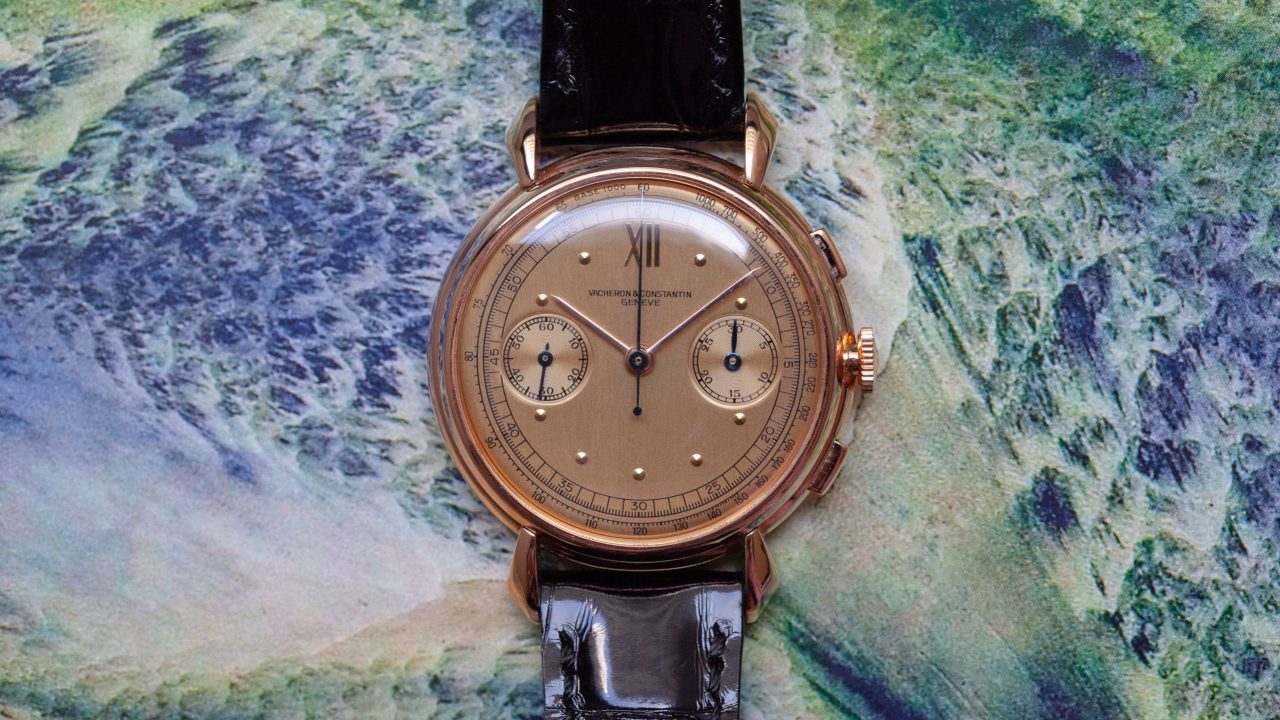
It’s impressive to see the variety of colours these dials can exhibit. Here is another reference 4178 from 1942 in pink gold, with a dial that moves from a soft champagne to a strong rose, under different lighting conditions.
Restoration
So what is done to the vintage watches when they pass through the workshop of Vacheron Constantin, before they are offered in one of their boutiques? It varies widely from one piece to another depending on how well the watch has been preserved since its manufacture date, with the minimum requiring a decent overhaul. It gets more involved when a case has been heavily polished, the movement serviced by an inexperienced watchmaker, or the dial is particularly distressed.
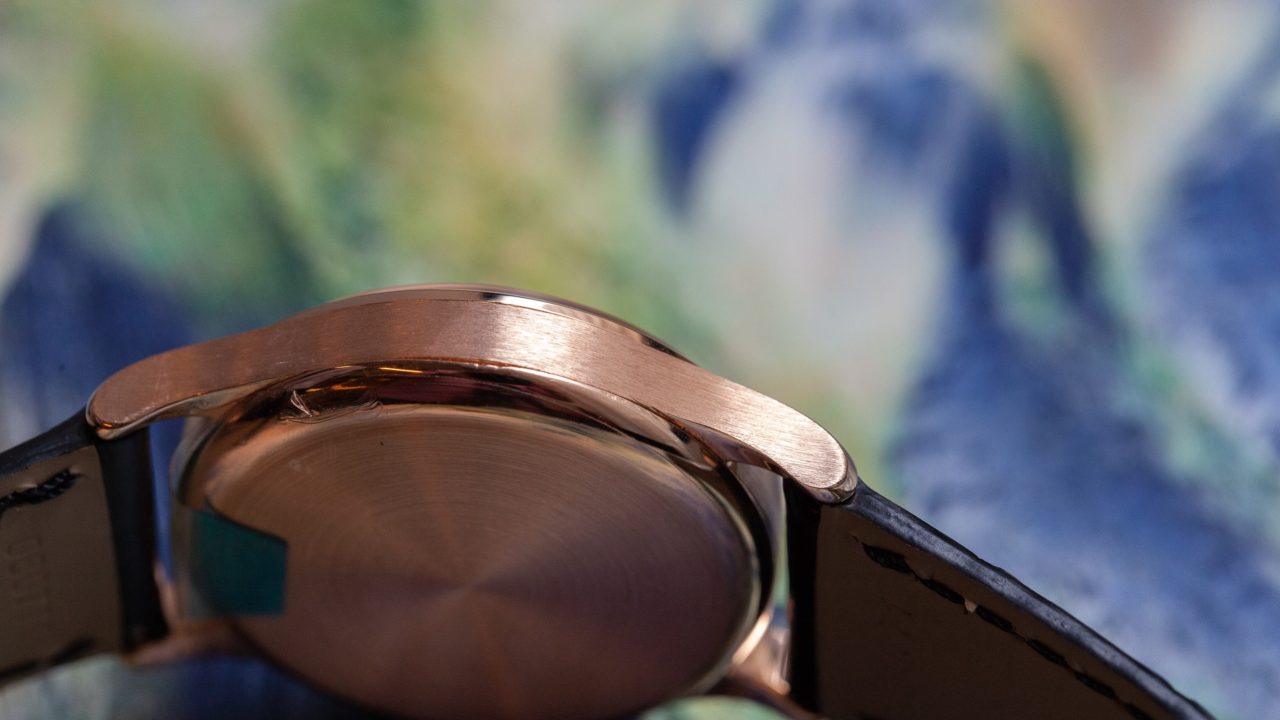
It would have been simple to add metal and re-profile he case, but some small nicks the the case edge made by a case opener have been preserved as a gentle reminder that this is not a new watch.
For cases, they can be sympathetically refinished, and in the more involved cases can have metal re-applied to allow for the correct lug profiles and share edges to be re-applied. For movements, parts can be either found within in the stores, which are extensive and contain many original components still residing in their original wax paper packaging, but when it cannot be found, an experienced watchmaker can re-fabricate the required item. If the plates and bridges have been badly scratched by the screwdriver tip of a sub-par watchmaker, the original côtes de Genève engraving can be applied again, and then re-plated in rhodium to give it that bright factory fresh finish.
With the dials it is a more involved process due to the intricate design and manufacturing process. With luck, all that is required is for the original varnish to be removed and a fresh coat reapplied to give the original vibrance back, as one would with an old master’s painting. When there has been heavier degradation, either through corrosion, or previous poor-quality cleaning and reprinting, the dial may require more extensive restoration. Through a specialist dial workshop, these projects can be undertaken using original design profiles and stamps, ensuring that it can be recreated in the exact manner as when the watch was born, down to small details like the strength of the serif on the typography. Even for an experienced collector with a strong loupe in their hand, the only give away that these watches did not leave the factory yesterday is the fact that it took place more than 50 years ago and there is not even a minuscule bit of ageing to the dials.
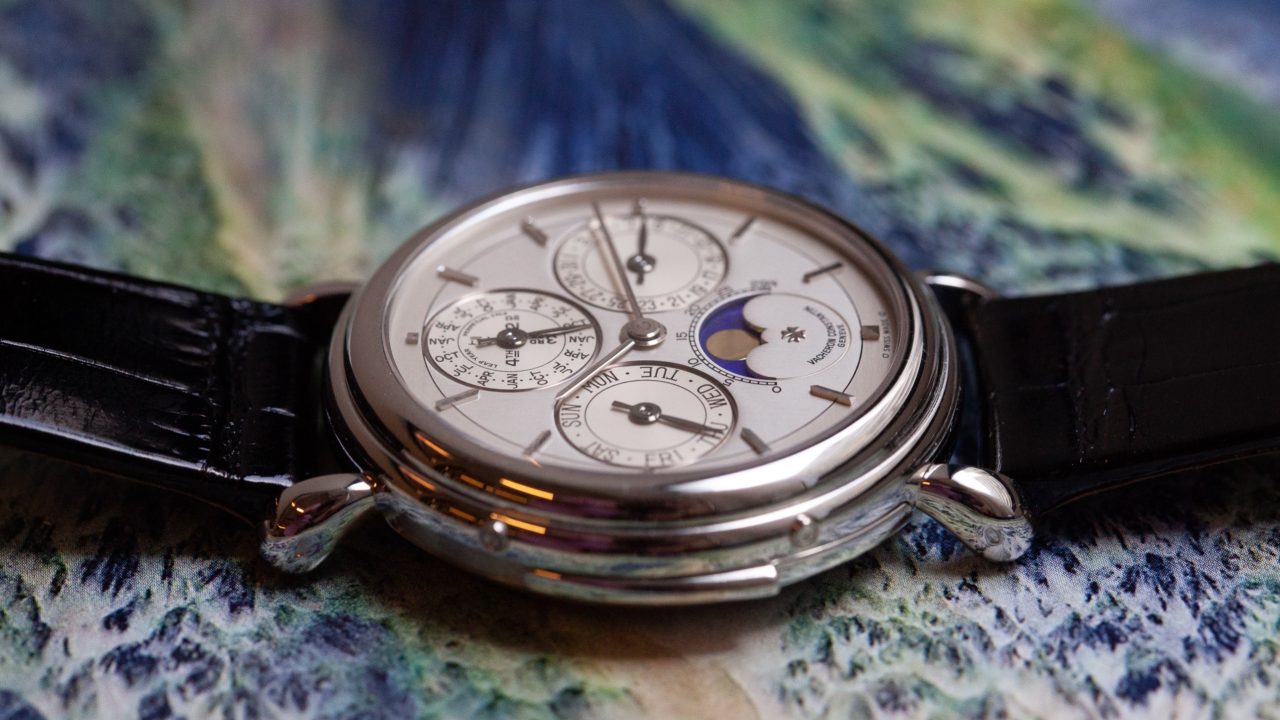
The moon phase disc of the reference 30020 is actually a piece of lapis lazuli, show the level of care and attention applied by Vacheron Constantin to a multi-complication watch such as this.
The respect shown by the Vacheron Constantin workshop also shines through in other places. When the opportunity allows, the effort really is in preservation rather than outright restoration, with small nicks to case edges being kept rather than doing heavy cosmetic enhancement, showing the characterful life that these watches lived with their previous owners over the preceding decades. Although not photographed here, there was also a pair of time-only pocket watches from the 1920s in the Les Collectionneurs that had very attractive dials showing a few small service marks to the centre where the hands had been removed, again left in peace to avoid heavily cleaning and refinishing that would take away some of the charm.
Another sign of the careful consideration used when working with these watches is the fitting of appropriate straps, with buckles of more classical scale (14mm and 16mm depending on the watch) and design, as would have come with them originally. It’s small details but good indicators that those managing the project understand what they are dealing with.
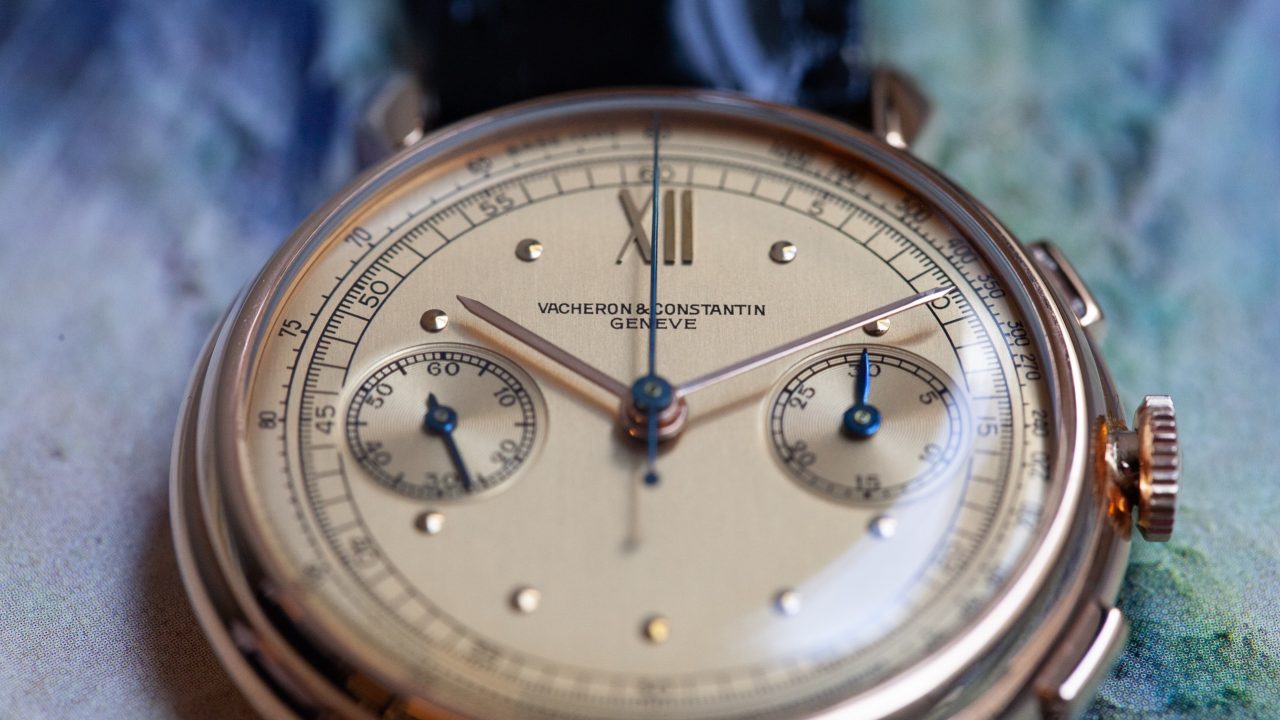
The devil is really in the details with these watches, from the elegantly blued hands, to the serifs, to the ampersand in the signature.
The biggest takeaway from spending time examining these watches up close is the question of why more manufacturers are not restoring and retailing vintage watches. Clearly it is time consuming and certainly not as profitable as selling their modern creations, but an offering such as Les Collectionneurs offers a wonderful platform to educate the clients of Vacheron Constantin on the history of the brand, and the abilities of their workshop to support watches even a century after they were made. In addition, it allows them to fall more in love with the maison through their vintage watches, that they can buy from the brand with confidence. It is almost inevitable that we will see similar exercises from other manufacturers, but those at Plan-les-Ouates are clearly at the forefront and have a considerable head start.
